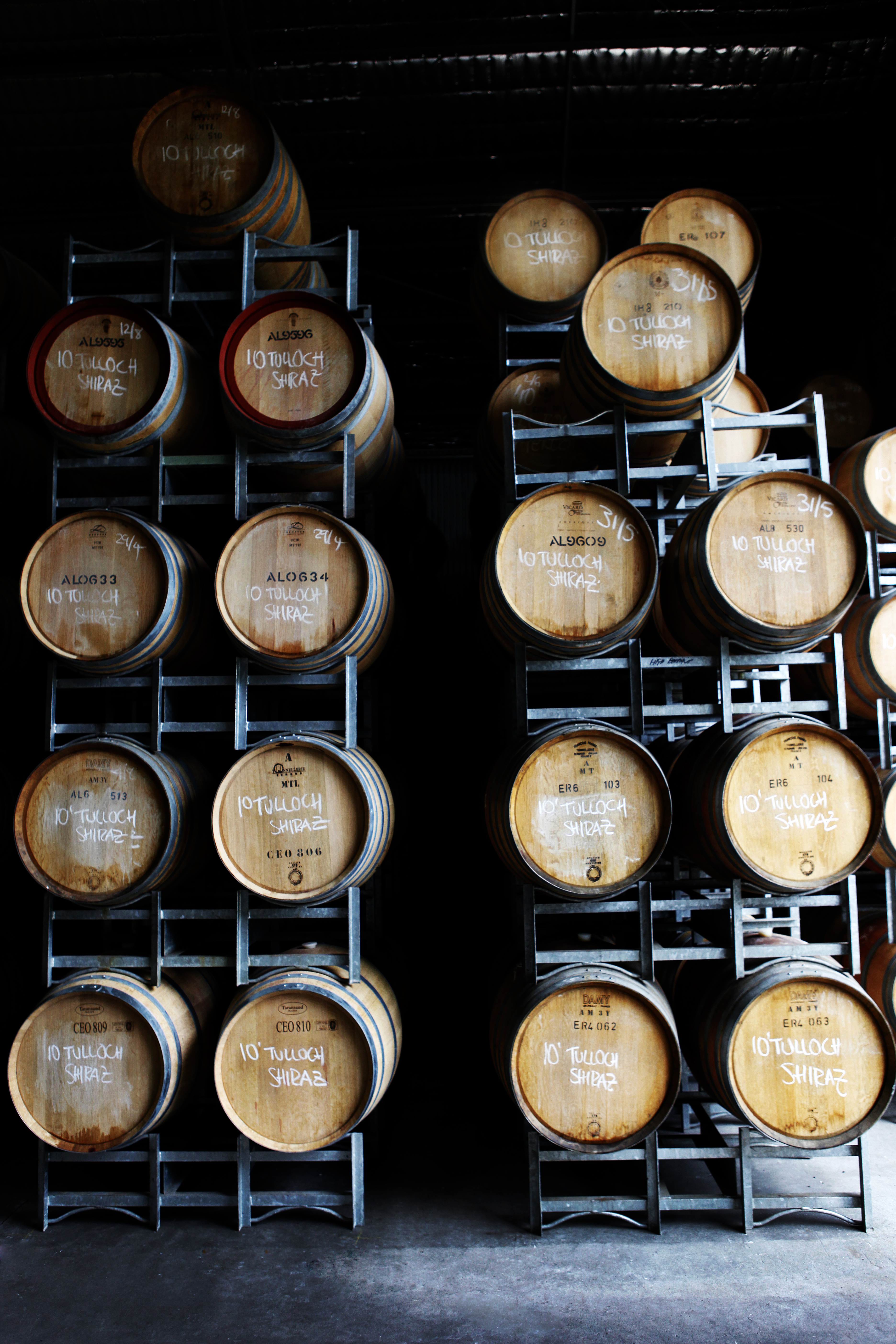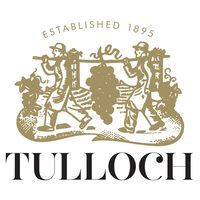Tulloch Wines holds your security and privacy in the highest regard.
Tulloch Wines provides a secure payment gateway with 128 bit SSL encryption for all online credit card transactions.
Tulloch Wines will only use your information for the express purpose for which you provided it. For more information on security, privacy, data protection & security, and your personal Information, please refer to our Privacy Policy below.
You must be aged 18 years old to purchase alcohol. By placing an order, you confirm that you are at least 18 years old. It is an offence to sell, supply to, or obtain liquor on behalf of a person under the age of 18 years. Liquor Act 1982.
PRIVACY POLICY
This Privacy Policy sets out the approach which JY Tulloch and Sons Pty Ltd (Tulloch Wines) will take in relation to the treatment of Personal Information. It includes information on how Tulloch Wines collects, uses, discloses and keeps secure, individuals’ personal information. It also covers how Tulloch Wines makes the personal information it holds available for access to and correction by the individual.
This policy has been drafted having regard to Tulloch Wines’ obligations under the Privacy Act.
This policy is a public document and has been prepared in light of National Privacy Principle 5, Openness.
1. COLLECTION
1.1 Tulloch Wines will only collect personal information where the information is necessary for Tulloch Wines to perform one or more of its functions or activities. In this context, “collect” means gather, acquire or obtain by any means, information in circumstances where the individual is identifiable or identified.
1.2 Tulloch Wines collects Personal Information primarily to supply employees of member organisations and individuals who obtain Tulloch Wines products and services directly from Tulloch Wines with information and details of its products and services. Tulloch Wines also collects and uses Personal Information for secondary purposes including:
– provision of products and services
– accounting purposes
– business planning and product development
1.3 Tulloch Wines will notify individuals (including, but not limited to, our customers) of the matters listed below at the time of collecting any Personal Information:
– The main reason that we are collecting Personal Information (this reason will be the Primary Purpose)
– Other related Uses or Disclosures that we may make of the Personal Information (Secondary Purposes)
– Our identity and how individuals can contact us, if this is not obvious that individuals can access the Personal Information that Tulloch Wines holds about them
– That individuals should contact Tulloch Wines (even if they are not a member or an employee of a member) if
– They wish to access, or correct Personal Information collected by us or have any concerns in relation to Personal Information
– The organisations or types of organisations to whom we usually Disclose the Personal Information
– Where applicable, any law that requires the Personal Information to be collected the consequences (if any) for the individual if all or part of the Personal Information is not provided to Tulloch Wines
1.4 Where it is not practicable for Tulloch Wines to notify individuals of all of the Collection Information before the collection of Personal Information, Tulloch Wines will ensure that individuals are notified of the Collection Information as soon as possible after the collection. Tulloch Wines will provide “post collection notification” in those circumstances where it is not practicable to notify individuals about the collection of their personal information before it is collected.
1.5 Tulloch Wines will not collect Sensitive Information from individuals except with express consent from the individual and only where it is necessary for Tulloch Wines to collect such information for an activity or function.
1.6 Tulloch Wines will not collect Personal Information secretly or in an underhanded way.
2. USE
2.1 Tulloch Wines will obtain an individual’s consent for Use of non-sensitive Personal Information for Secondary Purposes at the time of collection, unless the Use is a related Secondary Purpose which would be within the relevant individual’s Reasonable Expectations.
2.2 Tulloch Wines Uses Personal Information primarily for the purposes listed in 1.2 above.
2.3 If Tulloch Wines relies on the Direct Marketing exception to Direct Market to individuals it will ensure that:
i) individuals are clearly notified of their right to Opt Out from further Direct Marketing; and
ii) if the individual Opts Out of all Direct Marketing the Opt Out will be respected by Tulloch Wines and implemented free of charge.
2.4 Tulloch Wines will not use Sensitive Information for Direct Marketing.
2.5 Tulloch Wines may use Personal Information to avoid an imminent threat to a person’s life or to public safety. It may also use Personal Information for reasons related to law enforcement or internal investigations into unlawful activities.
2.6 Tulloch Wines will not use Personal Information without taking reasonable steps to ensure that the information is accurate, complete and up to date.
2.7 Tulloch Wines will not attempt to match de-identified or anonymous data collected through surveys or such online devices as “cookies”, with information identifying an individual, without the consent of the relevant individual.
3. DISCLOSURE
3.1 Tulloch Wines may Disclose Personal Information to related or unrelated third parties only if consent has been obtained from the individual.
3.2 Tulloch Wines may Disclose Personal Information to unrelated third parties to enable outsourcing of functions where that Disclosure or Use is for a related Secondary Purpose and has been notified to individuals or where such Disclosure is within the individual’s Reasonable Expectations.
3.3 Tulloch Wines will take reasonable steps to ensure that its contracts with third parties include requirements for third parties to comply with the Use and Disclosure requirements of the Privacy Act.
3.4 In the rare event that Tulloch Wines is required to disclose Personal Information to law enforcement agencies, government agencies or external advisors Tulloch Wines will only do so in accordance with the Privacy Act or any other relevant Australian legislation.
3.5 Tulloch Wines may Disclose Personal Information to avoid an imminent threat to a person’s life or to public safety.
3.6 Tulloch Wines may occasionally provide limited contact information from customer lists to trusted external partners for commercial purposes.
3.7 If a Disclosure is not for a Primary Purpose; is not for a related Secondary Purpose; or upfront consent has not been obtained, Tulloch Wines will not Disclose Personal Information otherwise than in accordance with the exceptions set out at 3.1 to 3.6 above.
4. INFORMATION QUALITY
4.1 Tulloch Wines will review, on a regular and ongoing basis, its collection and storage practices to ascertain how improvements to accuracy can be achieved.
4.2 Tulloch Wines will take steps to destroy or de-identify Personal Information after as short a time as possible and after a maximum of seven years, unless the law requires otherwise.
5. INFORMATION SECURITY
5.1 Tulloch Wines requires employees and contractors to perform their duties in a manner that is consistent with Tulloch Wines ‘ legal responsibilities in relation to privacy.
5.2 Tulloch Wines will take all reasonable steps to ensure that paper and electronic records containing Personal Information are stored in facilities that are only accessible by people within Tulloch Wines who have a genuine “need to know” as well as “right to know”.
5.3 Tulloch Wines will review, on a regular and ongoing basis, its information security practices to ascertain how ongoing responsibilities can be achieved and maintained.
6. ACCESS AND CORRECTION
6.1 Tulloch Wines will allow its records containing Personal Information to be accessed by the individual concerned in accordance with the Privacy Act.
6.2 Tulloch Wines will correct its records containing Personal Information as soon as practically possible, at the request of the individual concerned in accordance with the Privacy Act.
6.3 Individuals wishing to lodge a request to access and/or correct their Personal Information should do so by contacting Tulloch Wines, as per the details on the back of this document.
7. OPENNESS
7.1 Contact with Tulloch Wines via phone or web inquiry will be the first point of contact for inquiries about privacy issues.
Any formal privacy related complaints should be directed in writing to the Tulloch Wines Privacy Officer 638 DeBeyers Road Pokolbin NSW 2320.
7.2 Tulloch Wines will endeavour to manage any privacy related complaint efficiently and in a timely manner.
7.3 Tulloch Wines websites will contain a prominently displayed privacy statement and will include a copy of this Tulloch Wines Privacy Policy.
8. ANONYMOUS TRANSACTIONS
8.1 Tulloch Wines will not make it mandatory for visitors to its web sites to provide Personal Information unless such Personal Information is required to answer an inquiry or provide a service. Tulloch Wines may however request visitors to provide Personal Information voluntarily to Tulloch Wines (for example, as part of a competition or questionnaire).
8.2 Tulloch Wines will allow its customers to transact with it anonymously wherever that is reasonable and practicable.
9. GLOSSARY
Collection Information means the information outlined in 1.3 notified to individuals prior to, or as soon as practical after, the collection of their Personal Information.
Direct Marketing means the marketing of goods or services through means of communication including written, verbal or electronic means. The goods or services which are marketed may be those of Tulloch Wines or a Related Body Corporate or those of an independent third party organisation.
Disclosure generally means the release of information outside Tulloch Wines, including under a contract to carry out an “outsourced function”.
Opt Out means an individual’s expressed request not to receive further Direct Marketing.
Tulloch Wines means the JY Tulloch and Sons Pty Ltd
Personal Information means information or an opinion (including information or an opinion forming part of a database), whether true or not and whether recorded in a material form or not, about an individual whose identity is apparent, or can reasonably be ascertained from the information or opinion.
Primary Purpose is the dominant or fundamental reason for information being collected in a particular transaction.
Reasonable Expectation means a reasonable individual’s expectation that their personal information might be Used or Disclosed for the particular purpose.
Sensitive Information means:
(a) information or an opinion about an individual’s:
(i) racial or ethnic origin; or
(ii) political opinions; or
(iii) membership of a political association; or
(iv) religious beliefs or affiliations; or
(v) philosophical beliefs; or
(vi) membership of a professional or trade association; or
(vii) membership of a trade union; or
(viii) sexual preferences or practices; or
(ix) criminal record; that is also personal information or
(b) Health Information about an individual.
Use means the handling of Personal Information within Tulloch Wines.
CONTACTING TULLOCH WINES
If you require further information regarding Tulloch Wines’ Privacy Policy, contact us.
Telephone: 02 4998 7580
Email: cellardoor@tullochwines.com
638 De Beyers Road, Pokolbin NSW 2320, AUSTRALIA
ABN 58 099 104 720



